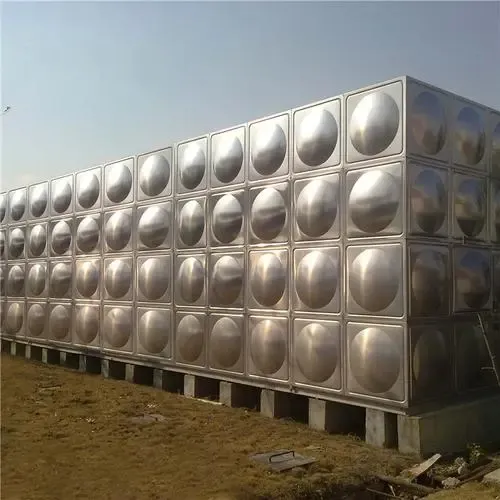loading...
- No. 9, Xingyuan South Street, Dongwaihuan Road, Zaoqiang County, Hengshui, Hebei, China
- admin@zjcomposites.com
- +86 15097380338
- Welcome to visit our website!
Understanding the Function and Importance of Well Water Pressure Tanks
Understanding Well Water Pressure Tanks Essential Components for Your Home
Well water pressure tanks play a vital role in the water supply system for homes that rely on groundwater. These tanks store water pumped from wells and maintain consistent water pressure throughout the plumbing system. An understanding of how these tanks work and their importance can help homeowners maintain efficient water systems and avoid potential problems.
What is a Well Water Pressure Tank?
A well water pressure tank is essentially a container that holds water. It is usually cylindrical and consists of two main compartments one filled with water and the other with air. The design allows the tank to create pressure, which pushes water through pipes when a faucet is opened. This system prevents the pump from needing to operate continuously, thereby extending its lifespan and reducing energy costs.
How Does a Pressure Tank Work?
When a well water pump extracts water from the ground, it sends it directly into the pressure tank. The water fills the tank, compressing the air in the top compartment. Once the tank reaches a specific pressure, usually set between 40 to 60 psi (pounds per square inch), the pump turns off. When a faucet is turned on, the compressed air pushes the stored water out of the tank into the plumbing system, ensuring a steady flow.
When the water level drops to a pre-set level, the pressure decreases, causing the pump to activate again to refill the tank. This cycle continues, providing a constant supply of water without the need for the pump to run continuously.
Benefits of Using a Pressure Tank
1. Consistent Water Pressure A well-designed pressure tank helps maintain consistent water pressure throughout your home, which is essential for showers, appliances, and irrigation systems.
well water pressure tank

2. Energy Efficiency By reducing the frequency of pump operation, a pressure tank can save energy. This not only cuts down on electric bills but also minimizes wear and tear on the pump, prolonging its lifespan.
3. Reduced Noise A pressure tank allows the pump to run less frequently, which can significantly reduce noise levels in the home, providing a quieter living environment.
4. Protection Against Water Hammer Water hammer, or the sudden surge of water that can occur when faucets are turned off abruptly, can damage pipes and appliances. A properly functioning pressure tank can help mitigate this issue.
Maintenance of Your Pressure Tank
Maintaining your well water pressure tank is crucial for its longevity and performance. Regular checks should include
- Inspecting Air Pressure The air pressure within the tank should be checked at least once a year. If the air pressure is too low, it can affect water pressure; if too high, it may cause the tank to become over-pressurized. - Checking for Leaks Examine the tank and its connections for any signs of leaks, which can lead to water loss and inefficient operation.
- Monitoring Water Quality Regularly test the well water for contaminants, and ensure the pressure tank's interior is in good condition to prevent water spoilage.
Conclusion
Well water pressure tanks are essential components of a water supply system for homes utilizing groundwater. They not only provide consistent water pressure but also enhance energy efficiency, reduce noise, and protect plumbing from potential damage. By understanding how these tanks work and committing to their regular maintenance, homeowners can ensure a reliable and efficient water supply for years to come. Investing time and attention into your well water system means peace of mind, knowing that your home’s water supply remains constant and dependable.
-
The Rise of FRP Profiles: Strong, Lightweight, and Built to LastNewsJul.14,2025
-
SMC Panel Tanks: A Modern Water Storage Solution for All EnvironmentsNewsJul.14,2025
-
GRP Grating: A Modern Solution for Safe and Durable Access SystemsNewsJul.14,2025
-
Galvanized Steel Water Tanks: Durable, Reliable, and Ready for UseNewsJul.14,2025
-
FRP Mini Mesh Grating: The Safer, Smarter Flooring SolutionNewsJul.14,2025
-
Exploring FRP Vessels: Durable Solutions for Modern Fluid HandlingNewsJul.14,2025
-
GRP Structures: The Future of Lightweight, High-Performance EngineeringNewsJun.20,2025
